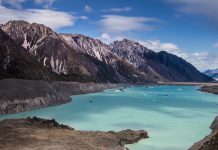/ month
placeholder text
Post List
Editor's Picks
Lucid Stead – A Fabulous Optical Illusion Artwork
Lucid Stead - A Fabulous Optical Illusion Artwork. An...
Germany Opens Bicycle Superhighway
Bicycle Superhighway - Germany is taking its well-known Autobahn...
Alamere Falls – That Flows Directly into the Ocean.
What more could you ask for! A beautiful Alamere...
Waterfall at Uluru – A Rare Occurs Sights Only for Lucky Tourists
The region where Uluru lies, the southern part of...
Stunning Illuminated Cracked Log Lamps
Tasmania-based Artist Duncan Meerding illuminates the forest with his Cracked...
The History of Chromatography
The History of Chromatography is very interesting to know. But...
Oriental Lion – The World’s Largest Redwood Sculpture
A huge red wooden sculpture of a roaring Oriental...
The Fossil Falls, California U.S.
The Fossil Falls is a marvelous geological formation, located...
Don't Miss
Pink Robin (Petroica rodinogaster)
The pink robin (Petroica rodinogaster) is a small, brightly...
Wedding Detail Shots – Every Little Detail Counts
Wedding Detail Shots
What’s your favorite memory from your wedding...
Carhenge – The Replica of Stonehenge in Nebraska
Carhenge is a replica of England's Stonehenge located near...
Olaudah Equiano’s Interesting Life Story
This firsthand account of Olaudah Equiano's capture by slavers,...
Graceful Honeyeater (Meliphaga gracilis)
Description: - Graceful Honeyeater is the third Australian member...
Understanding Death and Dying: A Path to Deeper Living
Death and Dying
Death and dying are immortal facts that...
The Sociable Red-fronted serin
INTRODUCTION
Serinus (canaries) is a genus of finches belonging to...
The Banaue Rice Terraces of Philippines
The Banaue Rice Terraces are approximately 2,000-year-old terraces that...
Spanish Mystic Forest Gorbea Natural Park
Gorbea Natural Park is a protected area located between...
Charismatic Planet © 2024 . All Rights Reserved.














